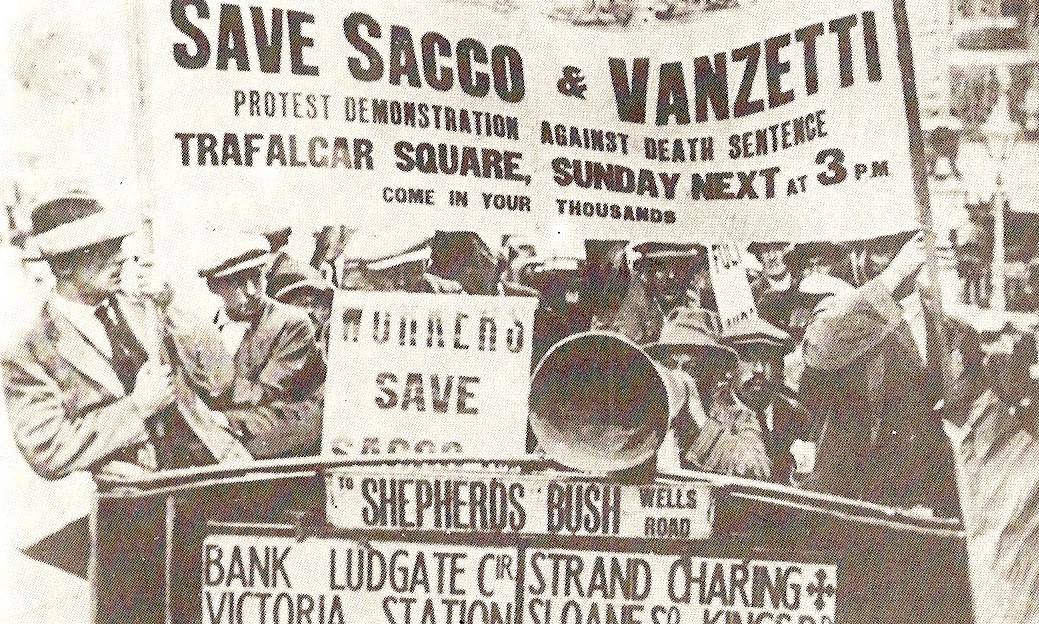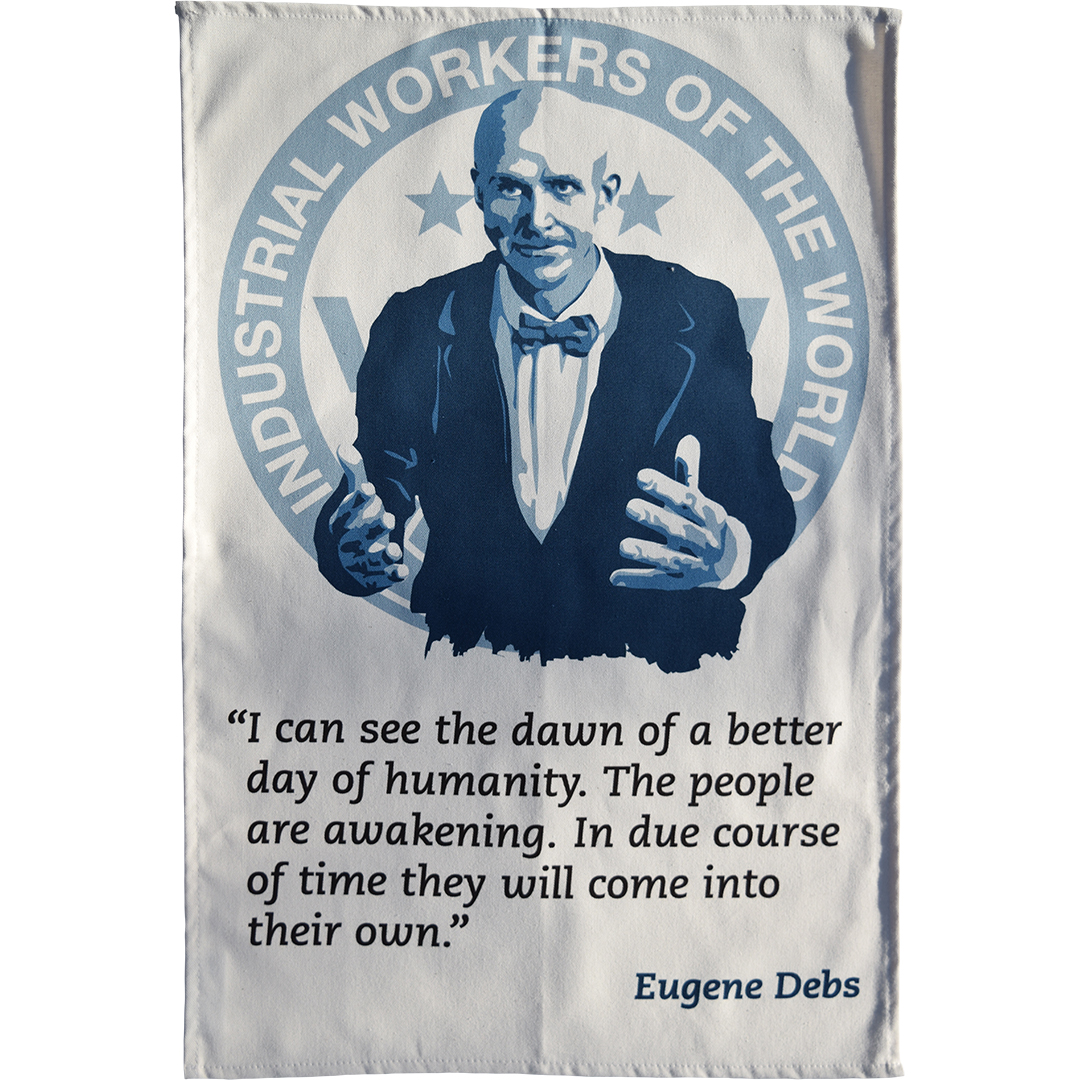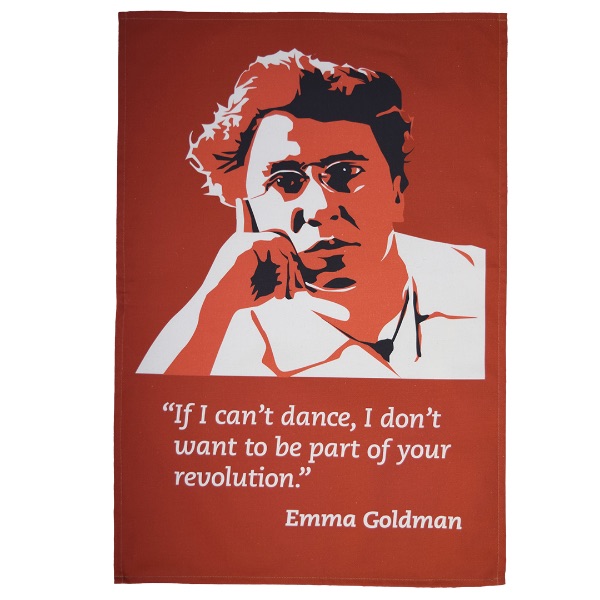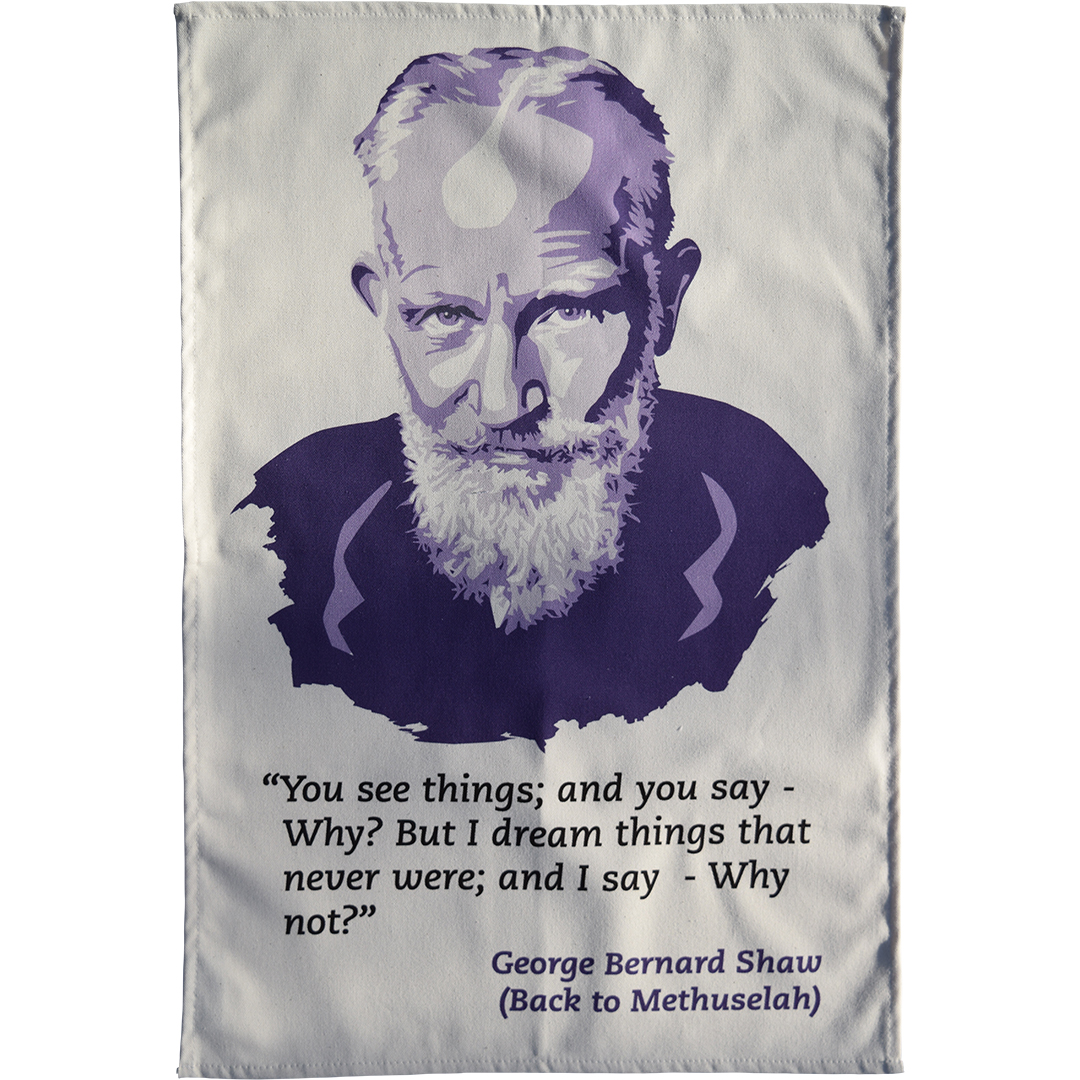Anarchists on Trial: The Story of Sacco and Vanzetti
Posted by Pete on Aug 23rd 2023

On this day in 1927, two Italian anarchists were executed in America for a crime they didn't commit
“I am suffering because I am a radical and indeed I am a radical; I have suffered because I am an Italian and indeed I am an Italian…”
- Bartolomeo Vanzetti
During the 1920s, outside the Norfolk County Jail in Massachusetts, it wasn’t uncommon to see a young boy throwing a ball to an inmate inside, back and forth over the wall.
It was Dante Sacco, playing catch with his dad, Nicola.
Nicola Sacco was arrested in 1920, along with his friend, Bartolomeo Vanzetti, in connection with an armed robbery in Braintree.
Their treatment by the legal system over the next seven years has become one of the most infamous miscarriages of justice in U.S. history.
This was 1920s America - the era of radicals like Eugene Debs and W.E.B Du Bois
Click to view our Eugene Debs tea towel
Sacco and Vanzetti, who were both anarchists, were arrested and charged with first-degree murder in the context of the post-WW1 Red Scare in America.
The government was cracking down violently on all kinds of left-wing activists: Russia had just had a revolution, and the authorities in America were terrified it would spread.
In this environment, left-wing immigrants were especially vulnerable. Thousands, including
Emma Goldman, were deported to Europe. Many had lived in the U.S. since they were little.
Sacco and Vanzetti, who had both immigrated from Italy in 1908, were now exposed.
With the authorities intent on criminalizing foreign-born radicals, two Italian anarchists – who’d first met during a strike in 1917 – were an obvious target.
Identified by some dubious witness statements as having been present at the armed robbery of the Slater and Morill Shoe Company in Braintree on 15 April 1920, where a guard and a paymaster were shot dead, both men were charged with first degree murder.
It was a capital crime – Sacco and Vanzetti’s lives were on the line.
Emma Goldman was arrested in 1917 for her anti-war activism in America, and was deported to Russia in 1919
Click to view our Emma Goldman tea towel
The trial, which ran from May to July 1921, was judged by an outspoken political reactionary, Webster Thayer – at his own request.
The whole thing turned out to be a cruel farce, and the
New York World would later denounce Thayer as
“an agitated little man looking for publicity and utterly impervious to the ethical standards one has the right to expect of a man presiding in a capital case.”
He constantly raged at Sacco and Vanzetti’s lawyer, Fred Moore – a radical himself who’d done legal work for the Industrial Workers of the World (IWW) union.
Thayer fumed:
“I’ll show them that no long-haired anarchist from California can run this court!”
Under Thayer’s management, Sacco and Vanzetti were quickly convicted of murder on 21 July 1921.
The transparently unfair and prejudiced nature of the trial caused immediate protests, especially in Europe and Latin America. Solidarity demos were held in 60 Italian cities.
Back in the U.S., Sacco and Vanzetti’s defense team immediately began applying for a retrial on various grounds, including an outright confession to the murders by another man.
But Thayer was having none of it.
The Irish writer and activist George Bernard Shaw was one of many famous radicals to express their support for Sacco and Vanzetti
Click to view our George Bernard Shaw tea towel
In 1924, after refusing motions for a new trial, Thayer boasted to a friend at his elitist social club:
“did you see what I did with those anarchistic bastards the other day?”
There was a huge mobilization of popular support for Sacco and Vanzetti in America, from all sorts of places: the Italian diaspora, the anarchist movement, the labor movement, celebrities and public intellectuals.
In January 1927, as Sacco and Vanzetti were appealing unsuccessfully to the Massachusetts Supreme Court, an eminent American lawyer named Felix Frankfurter argued that the trial had clearly been unfair.
Abroad, supporters were mobilizing, too.
The list of people who wrote to the Governor of Massachusetts demanding that he stop the execution of Sacco and Vanzetti in 1927 is a “who’s who” of interwar radicals: Albert Einstein,
George Bernard Shaw, H. G. Wells and others.
But it wasn’t enough.
Governor Alvan Fuller allowed the executions to go ahead. Sacco and Vanzetti were executed by electric chair on 23 August 1927.
Fifty years later, the Governor of Massachusetts proclaimed the trial to have been a miscarriage of justice.
It stands as a symbol of how political persecution can work through the courts.
But even when corruption rules and the odds are stacked against the people, there will always be those who fight the fight for justice.



